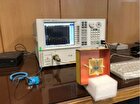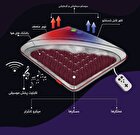High-Tech Smart Pills Transform Diagnosis, Treatment of Gastrointestinal Disorders

To track the movement of an ingestible “smart pill” through the Gastrointestinal (GI) tract, the researchers have generated 3D magnetic field gradients using high-frequency electromagnetic coils that encode each spatial point with a distinct magnetic field magnitude, the Nature Electronics reported.
The field magnitude is measured and transmitted by the “smart pill” to determine its precise location, which is then communicated to a smartphone using Bluetooth technology.
Existing “smart pills” do not offer the large field-of-view (FOV), high spatial resolution, and fully wireless operation that the 3D magnetic field gradient developed by the researchers allows for. This new technology holds the potential for future use in clinical applications such as more accurate and efficient diagnosis of gastrointestinal disorders and the precise targeting of therapeutic interventions and minimally-invasive procedures.
The ingestible wireless device senses and transmits its local magnetic field to an outside receiver. The magnetic field is applied by electromagnets that can be incorporated into backpacks and jackets for a more realistic assessment of GI motility, the movement of food from the mouth through the pharynx (throat), esophagus, stomach, small and large intestines and out of the body, as patients go about their lives. This system was successfully modeled in the gastrointestinal systems of large animals. The findings are reported in the paper titled “Location-aware smart-pills for wireless monitoring of gastrointestinal dynamics,” published today (February 13, 2023) in the journal Nature Electronics.
It is estimated that gastrointestinal disorders affect more than one-third of the world’s population, making it crucial to develop more accurate and effective diagnostic and treatment approaches. Specifically, several diseases such as gastroesophageal reflux disease and gastroparesis can result from abnormal gut motility where ingested food passes too quickly or slowly, making it especially valuable to track the food’s speed through the gut. Existing technology utilizes invasive procedures such as endoscopies or potentially harmful X-ray radiation, and often requires repeated evaluation in a hospital setting. The newly-developed “smart pill” offers a FOV that is more than three orders of magnitude higher than what previous microdevices offered, allowing for a broader scope, non-invasive, convenient, and highly accurate alternative.
“The smart pill our team has developed represents a more accessible and efficient approach to assessing GI motility that can benefit both patients and medical providers,” said Ramadi. “This is a new frontier for medical diagnosis and evidence-based treatment, and has the potential, with further research and refinement, to revolutionize how we can most effectively address health challenges that impact millions of people worldwide.
4155/v
























